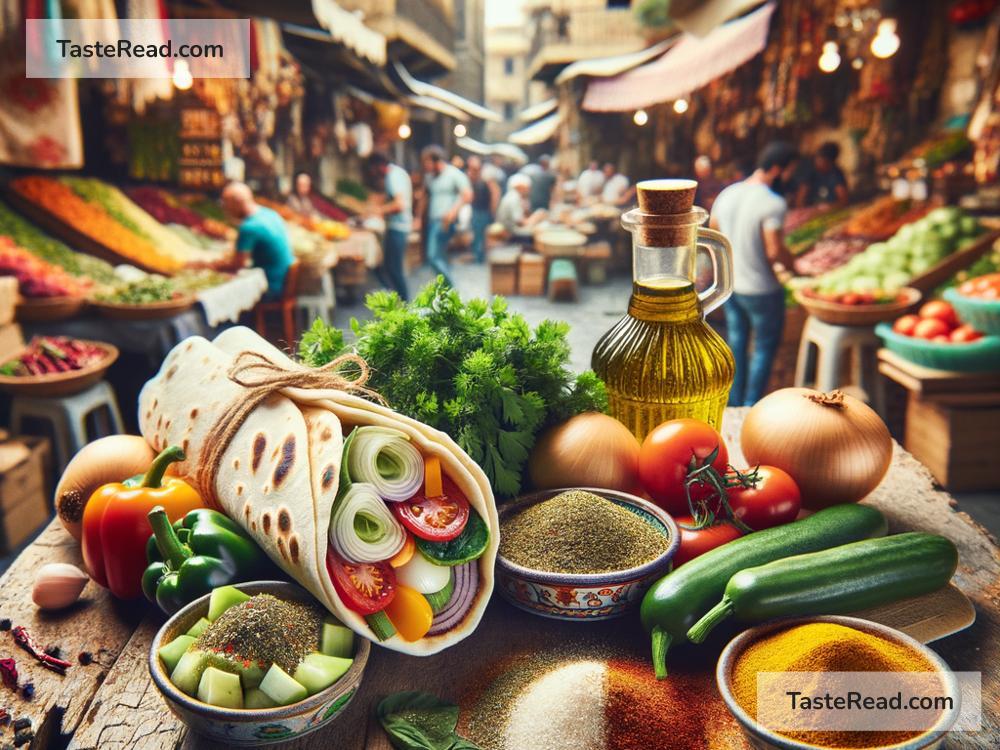Discovering the Fresh Flavors of Zaatar-Lavash Wraps in Lebanon
Lebanon is famous for its beautiful landscapes, vibrant culture, and delicious food. People all over the world love Lebanese dishes, from creamy hummus to hearty kibbeh. But one simple street food steals the spotlight: the Zaatar-Lavash wrap. This humble yet flavorful dish is a perfect example of Lebanese cuisine and its focus on fresh ingredients, bold flavors, and satisfying simplicity.
What Is Zaatar?
To understand the magic of the Zaatar-Lavash wrap, we first need to explore what Zaatar is. Zaatar is a traditional Middle Eastern spice blend made from a mix of dried thyme, sumac, sesame seeds, and sometimes oregano or marjoram. Each family or shop might have its own special recipe for Zaatar, making it unique. Its flavor is earthy, slightly tangy from the sumac, and nutty from the sesame seeds. Zaatar isn’t just a spice blend; in Lebanon, it holds cultural significance. Many people associate it with childhood breakfasts, gatherings, and the rich culinary heritage of the region.
Lavash: A Versatile Flatbread
Next in this tasty pairing is lavash, a soft, thin flatbread that’s popular across the Middle East, the Mediterranean, and beyond. It has a chewy texture, just the right amount of fluffiness, and is perfect for wrapping ingredients. Lavash is an excellent canvas for the bold flavors of Zaatar. Together, they make a match made in culinary heaven.
In Lebanon, lavash is often freshly baked in traditional ovens, adding an extra layer of warmth and authenticity to the dish. You can smell the delicious aroma of the bread as it’s prepared in local bakeries or roadside stalls.
How Is Zaatar-Lavash Wrap Made?
Making a Zaatar-Lavash wrap is simple, but the result is always deeply satisfying. First, the lavash bread is placed flat, and a generous spoonful of olive oil is spread across the surface. The next step is sprinkling the Zaatar mix evenly over the oil. Olive oil is an important part of Lebanese cooking; it enhances the flavor of the Zaatar and gives the wrap a rich, smooth texture. Some people even drizzle a little extra oil for added indulgence.
After the Zaatar is applied, the lavash is rolled tightly into a wrap. It’s then either served fresh or heated lightly to make the flavors come alive. Some vendors toast the lavash on a grill or press, creating a crispy outer layer. The result is incredible, whether you enjoy it fresh or heated.
Why Is Zaatar-Lavash Special?
At first glance, Zaatar-Lavash wraps might seem simple. After all, it’s just a spice blend and flatbread. However, simplicity is where its charm lies. The combination of Zaatar and lavash shows how Lebanese cuisine values high-quality ingredients and straightforward preparation. Every bite is an explosion of flavor—the tangy sumac, the herby thyme, the crunch of sesame seeds, and the richness of olive oil all come together beautifully.
Lebanese people also love Zaatar for its health benefits. Zaatar is packed with nutrients, antioxidants, and natural flavors. Olive oil and lavash add wholesome ingredients to the wrap, making it a nutritious, energizing snack or meal.
Where Can You Find Zaatar-Lavash Wraps in Lebanon?
Zaatar-Lavash wraps are everywhere in Lebanon. You’ll find them in small bakeries, roadside stands, and high-end Lebanese restaurants. Some bakeries specialize in preparing Zaatar wraps using traditional stone ovens, ensuring the perfect bake every time. If you walk through the streets of Beirut, Tripoli, or any Lebanese town, you’ll likely catch the irresistible aroma wafting from vendors selling fresh wraps.
Many locals eat Zaatar-Lavash wraps for breakfast, pairing them with a hot cup of tea or fresh vegetable sides like tomatoes and cucumbers. This quick, flavorful dish fuels the day ahead.
A Taste of Lebanese Culture
Food in Lebanon isn’t just about nourishment; it reflects the country’s rich cultural identity. Eating a Zaatar-Lavash wrap connects you to the traditions, flavors, and stories of Lebanon. Locals might share memories of eating these wraps as children or preparing them at home with family. It’s a dish that brings people together, whether it’s enjoyed on the streets or in the comfort of their homes.
Zaatar-Lavash Wraps Around the World
Lebanon’s culinary influence has spread across the globe, and Zaatar-Lavash wraps are now enjoyed far beyond its borders. Lebanese restaurants and bakeries around the world offer this classic dish, giving people everywhere a taste of Lebanon’s vibrant flavors. You can even make Zaatar-Lavash wraps at home with store-bought lavash and Zaatar spice mix, though tasting it fresh in Lebanon is an unforgettable experience.
Conclusion
Discovering the flavors of Zaatar-Lavash wraps in Lebanon is more than just a culinary experience—it’s a journey into the heart of Lebanese culture. This simple yet delicious street food showcases the country’s passion for fresh ingredients and strong flavors. Whether you’re munching on a wrap during a morning stroll or sharing it with friends over tea, a Zaatar-Lavash wrap connects you to the rich traditions of Lebanon. So, the next time you explore Lebanese cuisine, don’t miss this iconic dish. It’s sure to delight your taste buds and leave you craving more!


